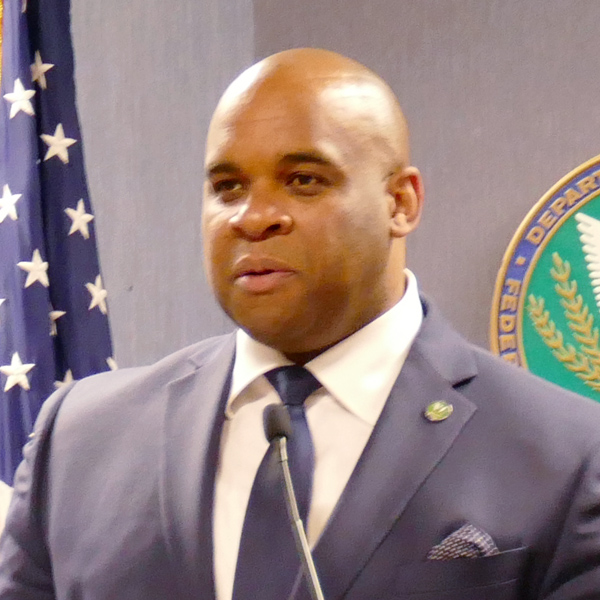LANSING, Mich. — Top executives from Michigan’s two largest utilities were challenged by state legislators Wednesday over why they were not helping customers recoup losses, including ruined food and medicine, when they lost power during the ice and snow storms that slammed the state in February and early March.
“The consensus is people over profits,” said Rep. Helena Scott (D) chair of the House Communications and Technology Committee, as the committee’s three-hour hearing into the outages concluded.
In her final comments, Scott questioned whether utility executives should forego their salaries and bonuses, citing former Chrysler CEO Lee Iacocca passing on his salary in the 1970s when the automaker was struggling. The meeting adjourned before any executive could respond.
The hearing was called after a series of outages that affected almost 1 million customers. The first and largest series of outages hit following an ice storm on Feb. 22 — considered the worst ice storm Michigan had seen in decades — that left as much as three-quarters of an inch of ice on buildings, roads, trees and power lines. That was followed by another ice storm some days later and then a large snowstorm on March 3.
Scott said legislators would take steps to ensure Michigan’s power grid was strengthened to prevent future outages, but no significant legislation has been introduced to date.
No additional House committee hearings are scheduled, although the Senate Energy and Environment Committee has slated a hearing for March 23.
Most of Wednesday’s hearing focused on questions to DTE Energy President and COO Trevor Lauer (NYSE:DTE), Tonya Berry, CMS Energy’s (NYSE:CMS) senior vice president for transformation and energy and Electric Operations Vice President Chris Laird.
Lauer was questioned about an article published last week by Bridge Michigan outlining how DTE cut some operating costs to help boost profits and shareholder dividends. The dividend payouts were announced on Feb. 2, less than three weeks before the February ice storm.
Lauer said none of the cutbacks affected safety or DTE’s efforts to restore power to affected customers. The cutbacks included such items as reducing the number of times grass was cut around substations, Lauer said.
He said DTE’s priority is to ensure customers are not affected by outages, but that it has been challenged by an increasing number of storms in recent years.
“We are very sorry for the outages we had,” Lauer said, adding that “we need to find a way to work with all our stakeholders” to minimize the chances of severe outages.
The executives were repeatedly asked why customers whose power was lost for multiple days would only get paid $35, in the case of DTE, or $25, in the case of CMS. Those amounts would not cover the cost of replacing food or medications, legislators said.
But the executives said those amounts were what is now required by the state’s Public Service Commission as a penalty. Laird also said DTE would work with community, governmental and charitable groups to assist customers who had suffered losses.
PSC Commissioner Katherine Peretick told the committee that new rules the PSC is implementing will require the utilities to automatically pay customers who have lost power for 48 hours (reduced from the current 60 hours) $35 a day instead of a single payment.
Lauer, Berry and Laird said the utilities’ primary focus will be minimizing the chance of outages if the state continues to suffer severe weather incidents. Tree trimming was highlighted by both companies; for example, Lauer said, DTE had boosted what it spent on tree trimming from $180 million in 2021 to $240 million in 2022 and would continue to boost those costs. Laird said CMS had gone from trimming trees along 5,000 miles of roads a year to 7,000 miles, with a goal of boosting the number to 8,000.
Lauer said Michigan is seeing the severe winds that Florida and other Gulf Coast states have seen for years. Automation — having electric systems automatically reroute power around downed lines — will be essential, Lauer said. That will allow DTE to focus restoration efforts on the houses and businesses that could not have power restored automatically.
Both companies said they are considering running more power lines underground. Michigan has very few underground power lines.
Lauer said some of the electrical infrastructure in service in Detroit is a century old and needs upgrading.
Highland Park, a city surrounded by Detroit, lost power to its senior centers, city hall, fire department and police department during the Feb. 22 storm, said Mayor Glenda McDonald.
The PSC on March 13 issued a request for third-parties to audit the state’s utilities and how they have responded to outages. The audits could take as much as a year to complete, said Peretick.
